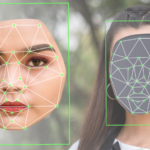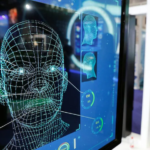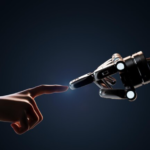Culture and Context in Online Safety Session at the Crossroads.
Notes from the panel discussion I was involved with at the NetSafety conference Crossroads.
The latest Internet Safety research from NetSafe shows that Māori are again over represented in negative statistics, this time for being victims of online abuse in its various forms. On the surface the research shows that societies unconscious bias, institutional racism and old derogatory stereotypes are just as applicable in the online world as in the physical world.
The first issue regarding Internet safety resources for Māori, is that there is no one profile or one world view by and for Māori. This makes it is difficult to say one solution will assist Māori. The NetSafe statistics which I have studied this year and analysed verifies this.
Before we begin, we need to remember that Māori have been colonised, faced forced assimilation and integrated into so called New Zealand society for about 200 years by successive governments. We have also faced an urban drift where many Māori left their traditional towns and villages for the city leaving behind their customs and knowledge.
Then as with our pacific cousins we have had a heavy missionary influence introduce new religions. We have also had intermarriages into many different cultures. Just look at me, I am not what many of you would have a mental image of a Māori looking like. Yet in my primary Iwi Ngai Tahu, green and blue eyes and olive skin in the summer is a common trait.
Then consider that Māori are hapu or clan based. Around 36 primary Iwi. Each iwi being made up of multiple smaller local hapu and whanau. Each hapu have their own hapu laws and customs or Kawa.
In more recent times, Māori language has become an official language of NZ and able to be spoken at school and in public without any punishment. Māori culture and Māori branding has entered mainstream. It is now cool to express and identity as being Māori.
We now have generations of Māori children brought up speaking Māori as a first language. These children are of the Kohanga Reo and Kura Kaupapa generation, who in addition to being a part of a new generation who demand things that mine and older generations wouldn’t, these kura and kōhanga kids naturally speak and think Māori.
Then we have the issues of commercial interests challenging traditional knowledge views and social peer pressure or as I liken it, discreet modern day forced integration.
The result of this is that there is no one Māori world view, therefore the resources targeting Māori need to be customised and targeted to all Māori.
Sure, there are many Māori who were brought up in the mainstream culture and who cannot identify with Māori culture. But we have to be careful not to let this section of the Māori population dictate a Māori world view despite it being an easy option for organisations, governments and resource creators. If we simply allowed this section of the Maori community to be the dominant voice, then standard resources would be suitable. The research by NetSafe suggests something different.
NetSafe have raised awareness of Māori with Internet Safety. This in my opinion is well overdue and very timely. I congratulate NetSafe for taking this initiative. Māori are talking about cyber safety.
But it is difficult to see how the research was conducted using any Indigenous Research methodologies or with a Māori cultural lens, so some stats are likely to be misleading and unfairly portray Māori in a negative picture.
The research states that Māori are more likely to be called names online by a family member. Without any context this reinforces a bias and negative stereotype. There is no consideration that Māori often have large wider family networks and that a definition of family or whanau is different than a European context of the word. Unlike the NZ use of the term family which usually only means immediate and close relatives. For many Māori, myself included we walk into a meeting as we regularly do for family, iwi and social reasons and we find ourselves in a room full of family.
Once a month I go to my marae meeting with about 70 other family members, then to a governance table for another cause where there are 17 other family members at the table.
The research also showed a cultural norm for Māori who seek advise from their elders. The research states Māori teenagers are more likely to consult their parents for cyber safety advice. The research did not make it clear if these were parents, grandparents or older family members, Aunties, Uncles etc. Remembering that it is a cultural norm to be around your extended family and close to everyone. Parent figures are not necessarily the European definition of a parent.
It is likely that the older family members who are approached for assistance were not brought up with the Internet, therefore have no real knowledge about cyber safety – also considering that cyber safety is a specialised are in itself.
Another area I want to highlight is that what is an offensive image to Māori could be simple joke to a non Māori. Both of these are likely to result in an increase in negative statistics for Māori teenagers.
Now I would like to discuss some possible solutions.
Solutions
The most common issue I hear from Māori about education resources, learning and many other issues that effect Māori is that the resources are not applicable to Māori.
Therefore;
- Any Internet Safety research must use an Indigenous research methodology and be culturally reviewed to avoid negative statistics and misleading facts as I have already highlighted.
- Māori culture is about a physical world where conversations occur face to face. The transition in thinking to a cyber environment could de sensitise some issues So some consideration to this is needed.
- Use te reo Māori and bilingual resources to cater to the kōhanga and kura reo generations is essential. As too is the fact that these people have different values and worldly understandings.
- Stock photos are just that. The usage of whanau Māori in a Māori environment will make the photo more relevant. A computer in a marae and surrounded by a whanau is one suggestion.
- When using scenarios about Internet safety, make sure they are applicable to Māori. An example could be a shared device with social media logged in and a cousin using your account without the account holders permission.
- Traditional Knowledge and practices are emerging back into society for Māori. Māori cosmology stories or what is now commonly referred to as myths and legends are important vehicles to disseminate lessons and knowledge. All that is needed is that these stories be more clearly sign posted and adapted to today. Therefore using Māori cosmology to explain Internet Safety is a powerful option.I have a series of videos and papers that do this. One example about data protection and passwords could use the story of Whiro attacking Tane Mahuta on his way to the heavens. Tikanga Māori and cosmology warns us of the issues of our image and voice recordings being used without our permission. These are powerful stories to consider.
- Indigenise your thinking of the Internet and devices. An example is a computer is like a Pa, that requires security to protect the whanau inside the pa. I have published several resources about indigenising the Internet, Open Source and tikanga Māori with Internet usage. These are all CC licenced and freely available on the Internet.
- Cultural safety advice resources: What do you do when you see cultural appropriation or offensive use of Māori or Indigenous knowledge? There are no legal protections but there are social options.
- Culturally aware staff answering the phones and emails at Internet safety organisations is also a must. Even just saying Kia ora, can break down cultural barriers and remove a the whakama or the shame or shyness.
- Don’t just have a brown face and tick the cultural box. Interview and ensure that the Māori staff are Māori practitioners and that other staff are aware of Māori culture.
- *Resources that offer traditional knowledge and tikanga Māori and how it applies to the digital area.
- Identify Māori role models to spread safety messages.
- Training programs for authoritative and respected people in Māori communities. This could be a kaumatua initiative that does not have to deal with technology use but the principles.
- As the Chinese proverb states “The Fish rots from the head”. An organisation governance group should consider applicable skills of a Māori practitioner on their board.
- Consider resources that assist cyber bullying by Māori against Māori.





Leave a Reply